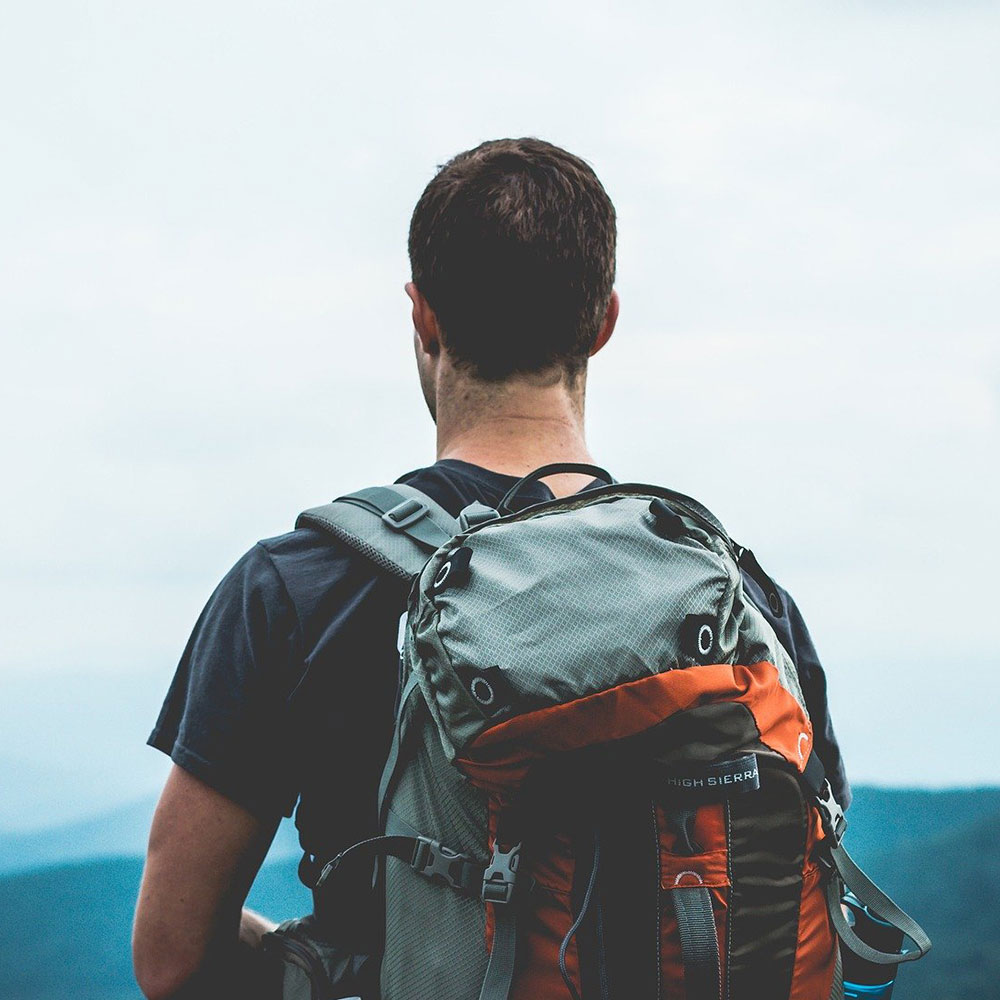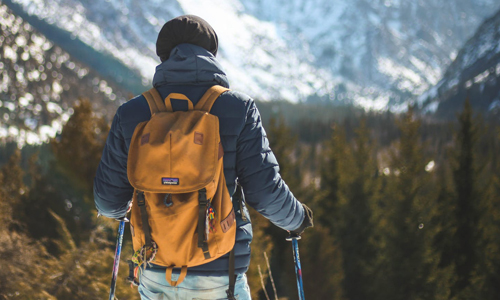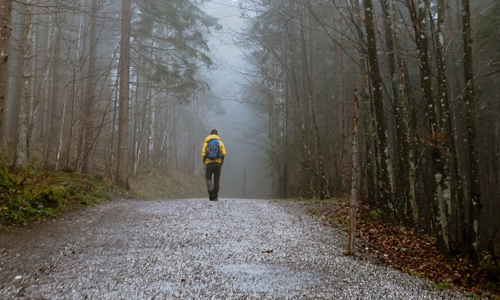Tips for Having a Memorable Winter Hiking Experience
Author

Javier Olivo is a blogger and a writer by heart. In the past, Javier worked as a woodcarver in a furniture store in his hometown. Being exposed to the outdoors, he often likes to give advice to people who prefer trekking in the woods. During his free time, Javier loves going to the gym and playing football.
Summer is over and winter is upon us. The travel bug in many of you will be tickling you to go out for some good old strolling over the snow-clad hills. In this blog, we're going to give you some guidance for winter strolling and a few key things you should follow while slope strolling.
- Weather of the Place You Want to Visit
Checking the climate is an absolute necessity before heading to your favourite place. Make a detailed analysis of the meteorological forecasts when climbing in the late fall and throughout the winter. Knowing the weather of the place where you're hiking will help you figure out which essentials you will need during the trip. Getting the forecast from local weather forecasting agencies is essential as they really know how the conditions change in the place. Try to get as much information as possible: what is the possibility of a snowstorm or what to do to avoid avalanches? Once you have figured out the pattern of the weather choose the time for your hike.
Getting the forecast from local weather forecasting agencies is essential as they really know how the conditions change in the place. Try to get as much information as possible: what is the possibility of a snowstorm or what to do to avoid avalanches? Once you have figured out the pattern of the weather choose the time for your hike.
- Never Forget the Essentials to Keep in Your bag
Things you would take with yourself while climbing in the late spring still apply to your winter strolling. Although the list of fundamentals is given below, you should pick the essentials depending on the terrain you are visiting.
- Footwear: warm socks, high gaiters, insulated hiking boots
- Hats: lightweight/heavyweight wool or hat fleece
- Gloves: lightweight wool or fleece gloves, waterproof gloves, insulated liners
- Jackets: insulated jacket with hood, waterproof jacket with hood
- Pants: hardshell pants that are windproof and waterproof
- Mid-Layer Insulation: fleece vest, fleece pullover, and fleece jacket
- Boxer jock underwear as the base layer, Long sleeve jersey, and long underwear
- Spare Clothing, winter traction aids, water bottles, 35-45L backpack
- Map, Headlamp with spare batteries, Compass, Whistle, Personal first aid kit, fire-starting materials, multi-tool kit, High energy snacks, personal care kit, and survival gear
- Wearing Clothes the Right Way
Follow the rule of three. Your first layer is your base layer that should be able to respond as your body temperature changes. The mid-layer wools are lightweight, they're not very cumbersome and should keep you pleasant and toasty. The following outer layer ought to be a lightweight waterproof shell coat. This layer is simply intended to keep you dry.
- Tell Loved Ones Where You’re Headed
The first step is to tell your loved ones where you are going. Give them a detailed map of your trail. Keep your locations updated on social media and let everyone in the close vicinity in contact via cell phones or satellite phones. Remember, the easier it is to track you, the higher are your chances of survival in case of mishaps. Try travelling in the daytime hours only as the weather is generally very unpredictable during the night. Ensure that you carry more nourishment with you. Contingent upon your eating regimen, attempt to eat nourishment with a high-fat substance as this will take more time for the nourishment to utilise and process giving you longer-enduring vitality.
Ensure that you carry more nourishment with you. Contingent upon your eating regimen, attempt to eat nourishment with a high-fat substance as this will take more time for the nourishment to utilise and process giving you longer-enduring vitality.
So, that is all you need to make your winter trail an ideal one. Of course, you can make adjustments according to your own needs. The tips mentioned above are just basics you should keep in mind before going out. So, do it your own way and do it in style – just don’t forget these basics as they will help you a lot.
Author

Javier Olivo is a blogger and a writer by heart. In the past, Javier worked as a woodcarver in a furniture store in his hometown. Being exposed to the outdoors, he often likes to give advice to people who prefer trekking in the woods. During his free time, Javier loves going to the gym and playing football.
Categories
- Sport (28)
- Product Reviews (3)
- Team Outdoor Look (7)
- Mike Wild (2)
- Mike Payton (2)
- Suse Hammond-Pears (3)
- Snowboarding (12)
- Latest Offers (105)
- Shop Talk (1)
- Competitions (7)
- Walking (413)
- Lifestyle Fashion (8)
- Travel (86)
- Kit Guides (176)
- Workwear Clothing (6)
- Safety Workwear (4)
- Health/Fitness (289)
- Skiing (91)
- Great Outdoors (1316)
- Cycling (92)
- January 2025
- December 2024
- November 2024
- October 2024
- September 2024
- August 2024
- July 2024
- June 2024
- May 2024
- April 2024
- March 2024
- February 2024
- January 2024
- December 2023
- November 2023
- October 2023
- September 2023
- August 2023
- July 2023
- June 2023
- May 2023
- April 2023
- March 2023
- February 2023
- January 2023
- December 2022
- November 2022
- October 2022
- September 2022
- August 2022
- July 2022
- June 2022
- May 2022
- April 2022
- March 2022
- February 2022
- January 2022
- December 2021
- November 2021
- October 2021
- September 2021
- August 2021
- July 2021
- June 2021
- May 2021
- April 2021
- March 2021
- February 2021
- January 2021
- December 2020
- November 2020
- October 2020
- September 2020
- August 2020
- July 2020
- June 2020
- May 2020
- April 2020
- March 2020
- February 2020
- January 2020
- December 2019
- November 2019
- October 2019
- September 2019
- August 2019
- July 2019
- June 2019
- May 2019
- April 2019
- March 2019
- February 2019
- January 2019
- December 2018
- November 2018
- October 2018
- September 2018
- August 2018
- July 2018
- June 2018
- May 2018
- April 2018
- March 2018
- February 2018
- January 2018
- December 2017
- November 2017
- October 2017
- September 2017
- August 2017
- July 2017
- June 2017
- May 2017
- April 2017
- March 2017
- February 2017
- January 2017
- December 2016
- November 2016
- October 2016
- September 2016
- August 2016
- July 2016
- June 2016
- May 2016
- April 2016
- March 2016
- February 2016
- January 2016
- December 2015
- November 2015
- October 2015
- September 2015
- August 2015
- July 2015
- June 2015
- May 2015
- April 2015
- March 2015
- February 2015
- January 2015
- December 2014
- November 2014
- October 2014
- September 2014
- August 2014
- July 2014
- June 2014
- May 2014
- April 2014
- March 2014
- February 2014
- January 2014
- December 2013
- November 2013
- October 2013
- September 2013
- August 2013
- July 2013
- June 2013
- May 2013
- April 2013
- March 2013
- February 2013
- January 2013
- December 2012
- November 2012
- October 2012
- September 2012
- August 2012
- July 2012
- June 2012
- May 2012
- April 2012
- March 2012
- February 2012
- January 2012
- December 2011
- November 2011
- October 2011
- September 2011
- August 2011
- May 2010
- April 2010
- March 2010
- February 2010
- January 2010
- November 2009
- October 2009
- September 2009
Submit a Comment